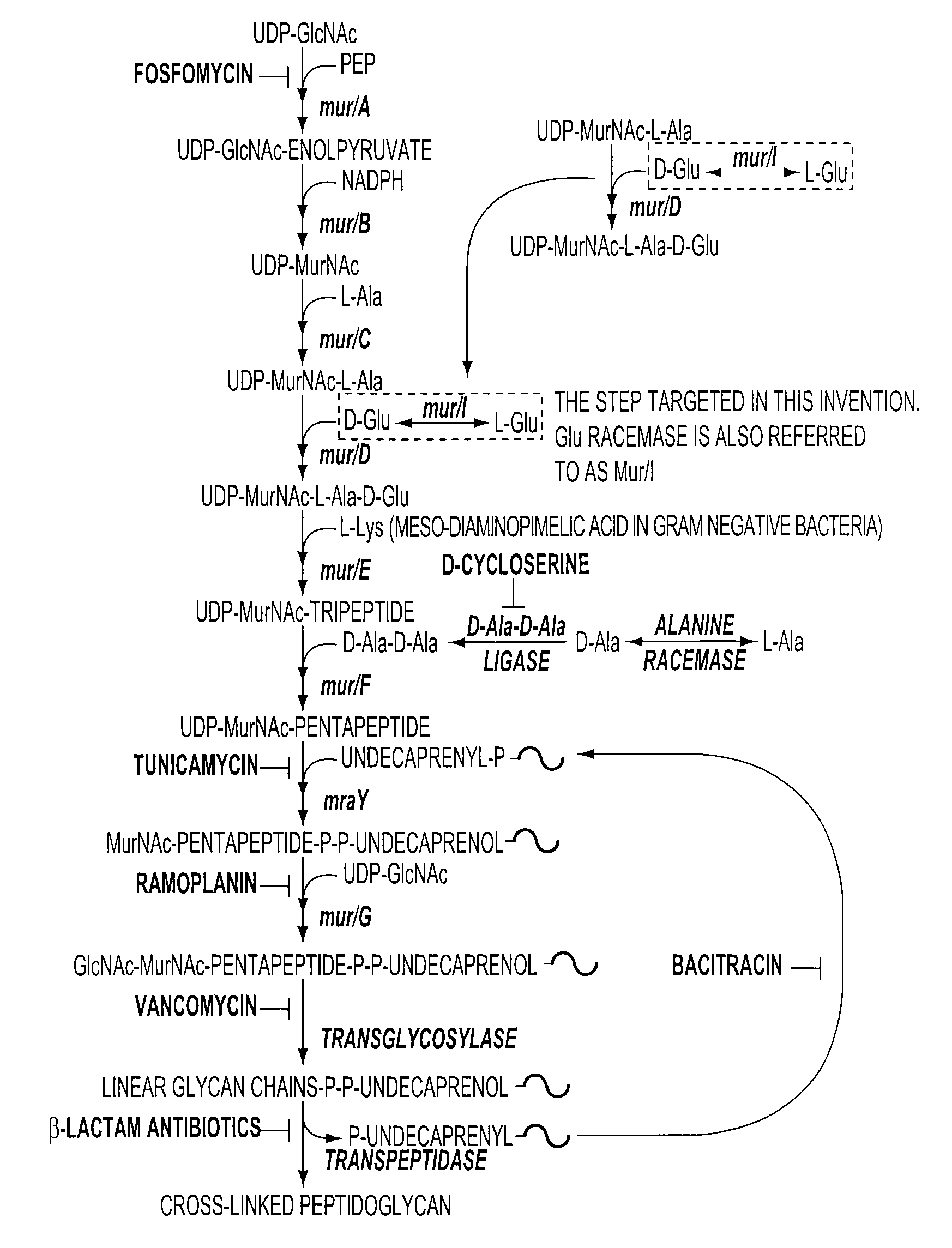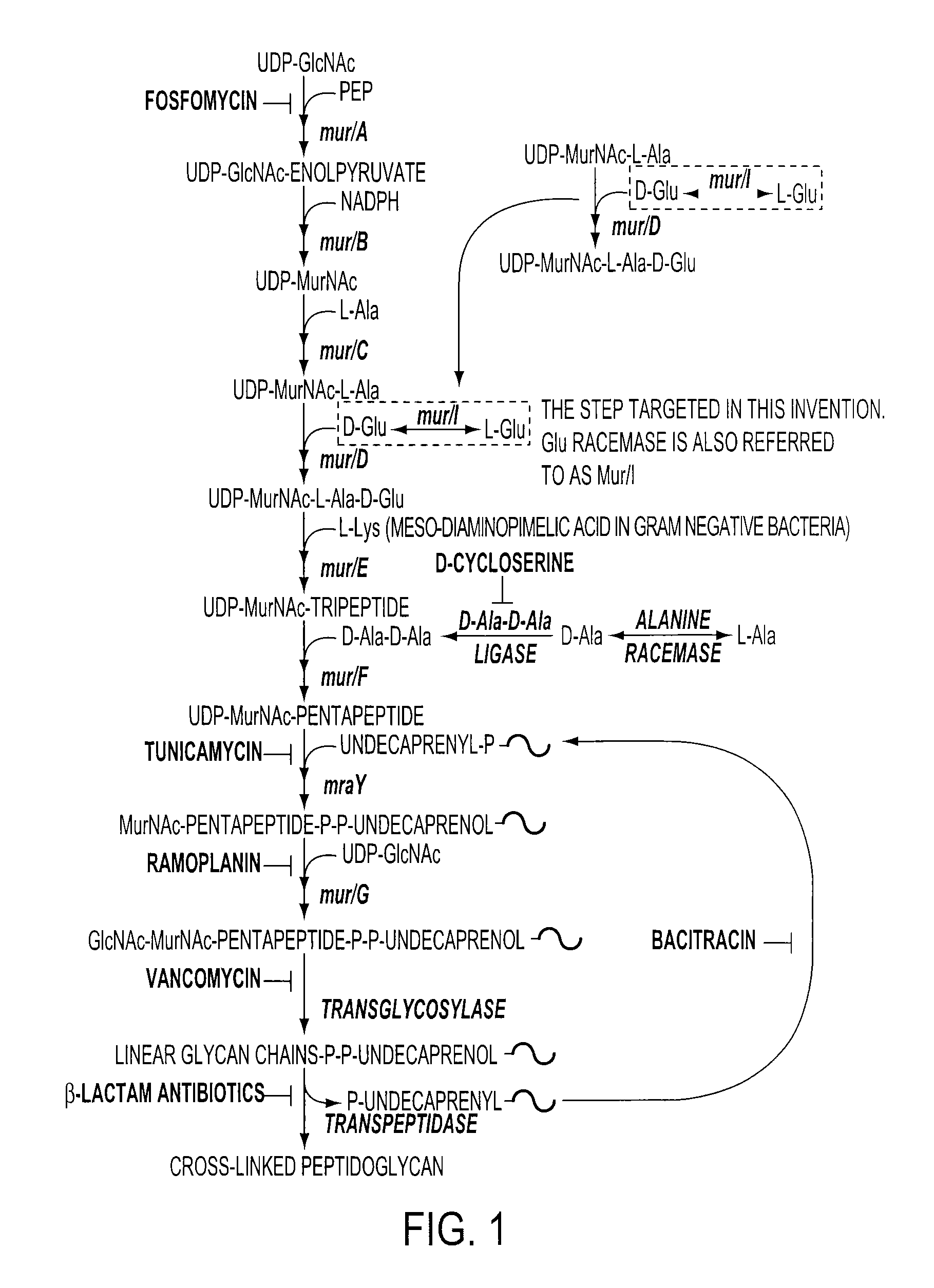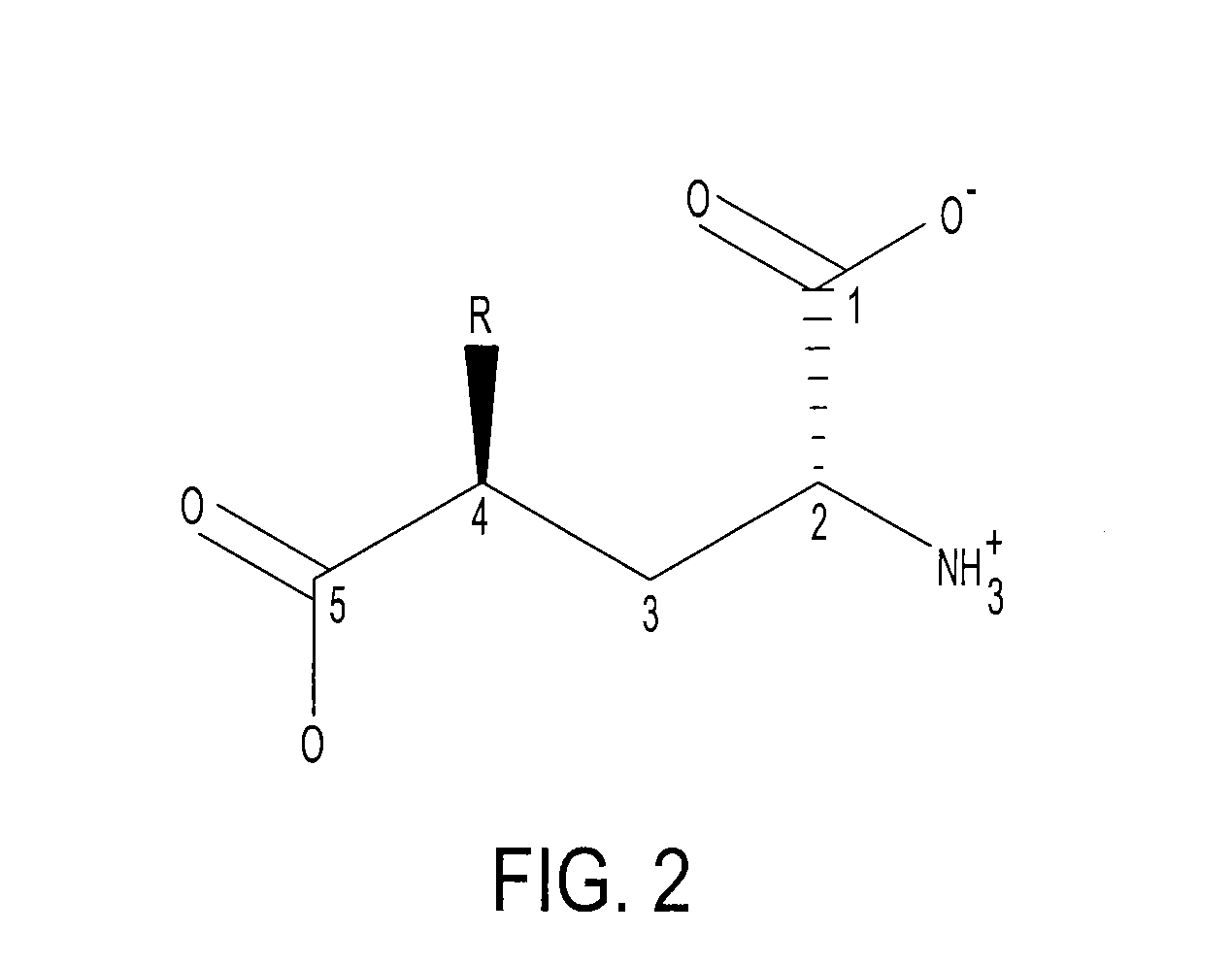Model for Glutamate Racemase Inhibitors and Glutamate Racemase Antibacterial Agents
- Summary
- Abstract
- Description
- Claims
- Application Information
AI Technical Summary
Benefits of technology
Problems solved by technology
Method used
Image
Examples
Embodiment Construction
[0045]FIG. 1 is a schematic representation of the bacterial peptidoglycan biosynthetic pathway showing known antibiotic targets. D-glutamate is required for the synthesis of the cell wall. The enzyme glutamate racemase (also known as MurI) is the enzyme that converts L-glutamate to the necessary D-glutamate for bacterial cell survival.
[0046]Because there is no structure available for glutamate racemase from S. pneumoniae, ligand-based drug design approaches can be used to develop potent glutamate racemase inhibitors. Known glutamate racemase inhibitors3 were not as effective as desired. They were highly charged compounds and, therefore, were expected to have poor membrane permeability. FIG. 2 shows the general structure of glutamate racemase inhibitors. All inhibitors were derivatives of D-glutamic acid, which explains the highly charged nature of these inhibitors. R is an aliphatic or an aromatic hydrophobic group. They showed antibacterial activity against only S. pneumonia, which...
PUM
| Property | Measurement | Unit |
|---|---|---|
| Fraction | aaaaa | aaaaa |
| Fraction | aaaaa | aaaaa |
| Fraction | aaaaa | aaaaa |
Abstract
Description
Claims
Application Information
 Login to View More
Login to View More - R&D
- Intellectual Property
- Life Sciences
- Materials
- Tech Scout
- Unparalleled Data Quality
- Higher Quality Content
- 60% Fewer Hallucinations
Browse by: Latest US Patents, China's latest patents, Technical Efficacy Thesaurus, Application Domain, Technology Topic, Popular Technical Reports.
© 2025 PatSnap. All rights reserved.Legal|Privacy policy|Modern Slavery Act Transparency Statement|Sitemap|About US| Contact US: help@patsnap.com



